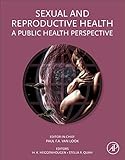Sexual and reproductive health : a public health perspective / editor-in-chief, Paul F A van Look, Consultant in Sexual and Reproductive Health, Val-d'Illiez, Switzerland ; editors, H K. Heggenhougen, Centre for International Health, University of Bergen, Norway; Department of International Health, Boston University School of Public Health, Boston, USA; and Department of Global Health and Social Medicine, Harvard Medical School, Boston, USA; Stella R. Quah, Duke-NUS Graduate Medical School Singapore, Singapore.
Material type: TextPublication details: San Diego : Academic Press, [2011]Description: x, 338 pages : illustrations ; 28 cmISBN:
TextPublication details: San Diego : Academic Press, [2011]Description: x, 338 pages : illustrations ; 28 cmISBN: - 9780123850096 (hardback : alkaline paper)
- 613.9 22
- RA652 .S49 2011
- WQ 200
| Item type | Current library | Call number | Status | Date due | Barcode | |
|---|---|---|---|---|---|---|
 Books
Books
|
Nepal Health Research Council Book Cart | WQ 200/LOO/2011 (Browse shelf(Opens below)) | Available | 001974 |
Book
Includes bibliographical references and index.
Machine generated contents note: Section 1: Physiology, General Epidemiology and Demography Section 2: Core Elements Section 3: Reproductive CancersSection 4: Ethics and other General Aspects.
"This volume presents the highlights of current global thinking about sexual and reproductive health. Major changes have taken place in the last 15 years in the way decision-makers think about the subject and the manner in which programmes deliver comprehensive sexual and reproductive health services. The turning point was the International Conference on Population and Development (ICPD) held in Cairo, Egypt, in 1994. ICPD was a watershed for several reasons. First, more than in any of the preceding United Nations population conferences, the issue of population was clearly placed as being central to sustainable development. Second, the narrow focus on population growth ("the population bomb") which had been a neo-Malthusian concern and preoccupation ever since the Club of Rome published its 1972 report Limits to Growth, was replaced by the comprehensive concept of (sexual and) reproductive health. Third, and linked to the definition and introduction of the reproductive health concept, was the strong call for a paradigm shift away from a policy environment driven by demographic considerations (sometimes to the point of using coercion in family planning services in order to reach demographic targets) to an environment that recognized the right of individuals to make their own choices. And, last but not least, ICPD as well as the Fourth World Conference on Women (FWCW) held the following year in Beijing, People's Republic of China, strongly emphasized that the rights of women and men to good sexual and reproductive health are firmly grounded in universal human rights"--Provided by publisher.
There are no comments on this title.

